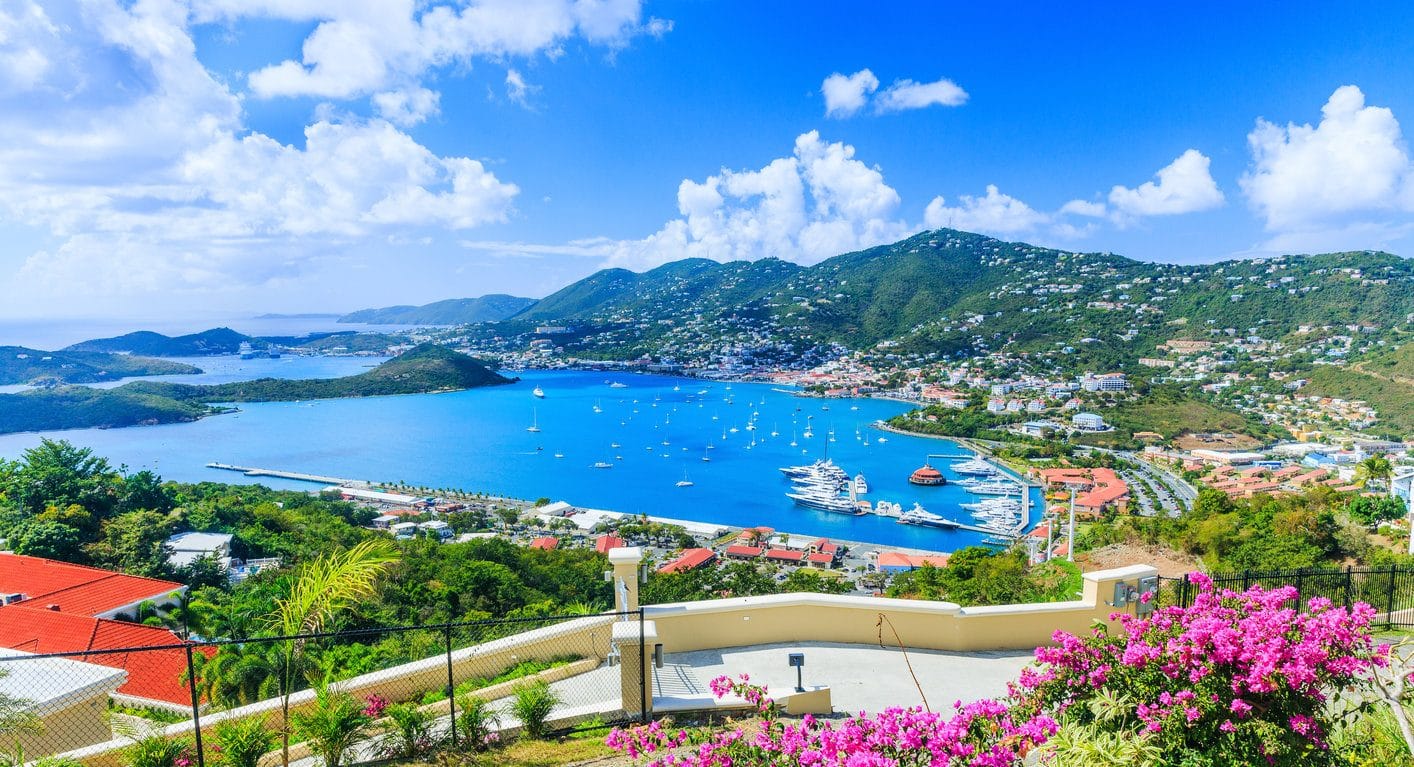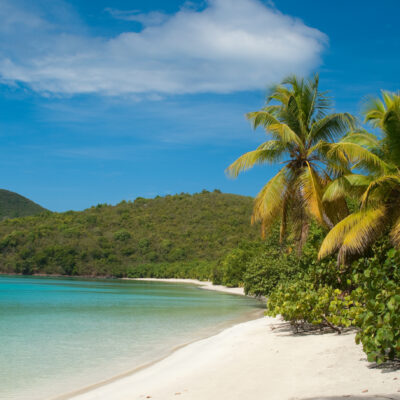When people ask me where some of my favorite Caribbean beaches are, they’re surprised when I tell them that they’re in the United States (well, technically, in the U.S. Virgin Islands). Made up of three main islands, St. Thomas, St. Croix and St. John, the US Virgin Islands are filled with pristine beaches that also happen to have some of the best snorkeling and diving spots in the world. Many of the top beaches across the three islands are also located in national parks or protected areas, which, for visitors, means clean shorelines with well-maintained facilities. If you’re ready to plan a trip to the US Virgin Islands, here are the best beaches to visit.
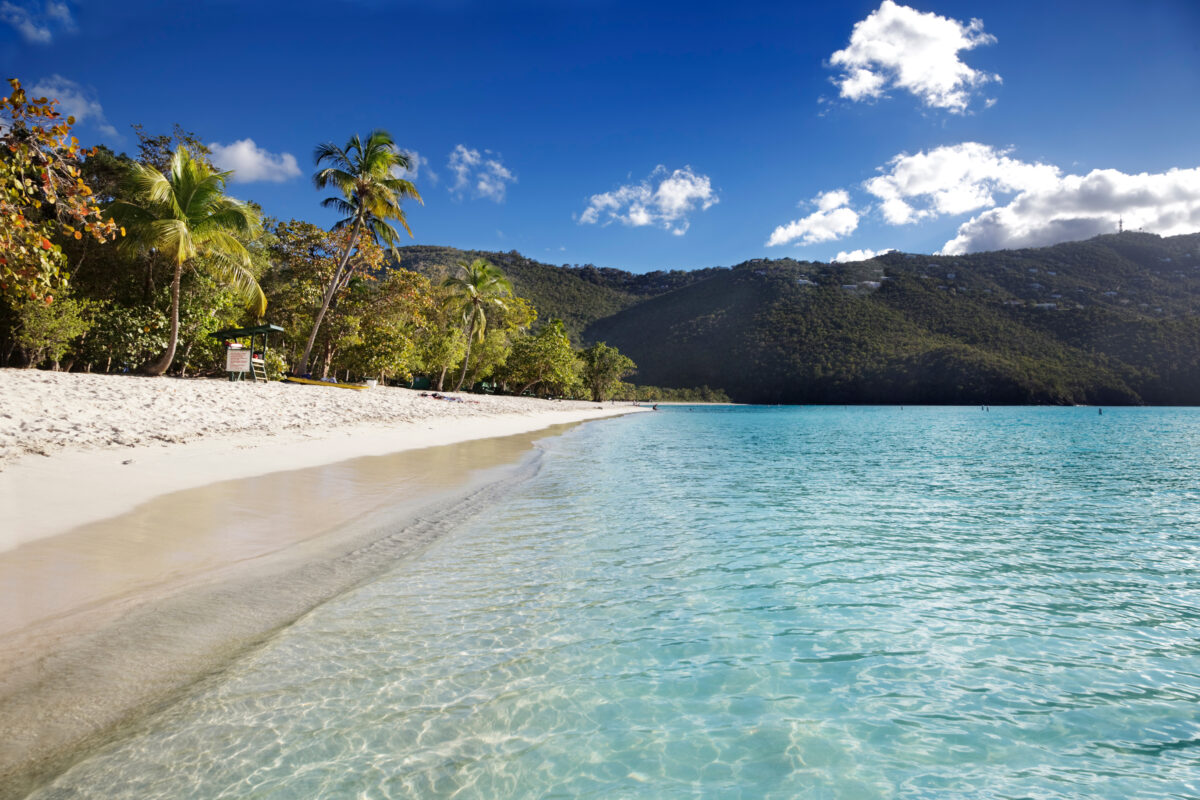
Magens Bay, St. Thomas
Of the three islands, St. Thomas is the most visited. The capital, Charlotte Amalie, is a popular stop for cruise ships, and the island serves as a gateway to ferry services to the smaller St. John, which lacks a commercial airport. Whether you’re in St. Thomas for the day or a few days, your best bet for a perfect beach day is Magens Bay. The beach is located on the north side of the island, and the often-visited beachfront features amenities like restrooms, lifeguards and a few beachside restaurants like Fairchild’s Beach Bar and Grill. The white sand beach is backed by a protected nature preserve, so while it’s a popular beach, if you arrive early on a weekday, there’s still a feeling of seclusion.
Sapphire Beach, St. Thomas
On the eastern coast of St. Thomas, you’ll find Sapphire Beach, a laid-back white-sand beach with some of the warmest waters on the island. If you want to spend the day doing water sports, you can also rent snorkeling gear here. Windsurfing and kayaking are popular, and the nearby marina also offers jet skiing and parasailing. Complete your beach day with a visit to either Sapphire Beach Bar (the fish tacos here are popular) or Saudi’s Caribbean Bar & Grill in Sapphire Village. The latter is known for its Bushwacker cocktail, a potent mix of rum, coffee liqueur, creme of coconut and milk.
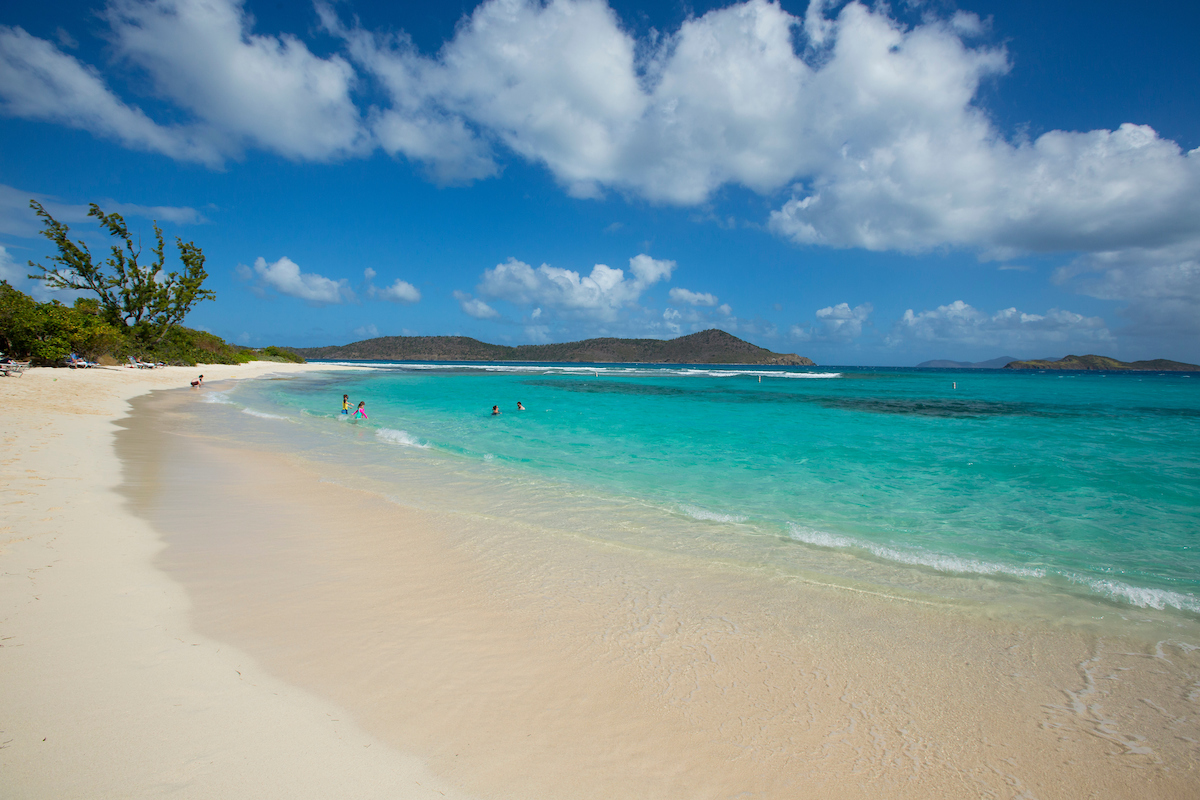
Lindquist Beach, St. Thomas
Another great beach on St. Thomas is Lindquist Beach, also known as Smith Bay Beach, located on the eastern end of the island. The beach is part of a 21-acre protected park—Smith Bay Park—and has picnic tables, restrooms and a lifeguard on duty. The beach is great for families due to its shallow and clear water. In addition to the transparent water, visitors here enjoy views of St. John and the British Virgin Islands. The beach is lightly populated during the week, but on Sundays, locals like to come and picnic. There are no restaurants on the beach, so come prepared with your own food and drinks (and note that there’s a $7 fee for park entrance).
Rainbow Beach, St. Croix
St. Croix is the largest of the three U.S. Virgin Islands and has a plethora of beautiful beaches. One is Rainbow Beach on the island’s west end, near Fredrickson, the island’s second largest town. The calm waters are excellent conditions for kayaking and paddleboarding, and you can rent equipment just steps from the shore at West End Water Sports. If you’re more of a “sitting pretty on the beach” type of beachgoer, you can opt to rent a beach chair or umbrella and soak up the sun. Keep in mind that this is a popular cruise stop, so it can get busy. On Sundays, the beach often fills with locals enjoying “Sunday Funday” with beach volleyball games and live music.
Buck Island, St. Croix
If you’re in St Croix for a few days, take a short boat ride (about 45-90 minutes, depending on the weather) to Buck Island from the harbor in Christiansted, the capital of St. Croix. This is the perfect spot for a day trip since the tiny island (only a mile long and half a mile wide) is uninhabited, and the completely undeveloped beach doesn’t have any amenities. Buck Island is designated as a National Monument, and two-thirds of the island is surrounded by a protected coral reef, making it one of the best areas for snorkeling and swimming. Since it’s a national monument, you’ll need to book a half-day or full-day boat tour with an approved tour operator like Caribbean Sea Adventures.
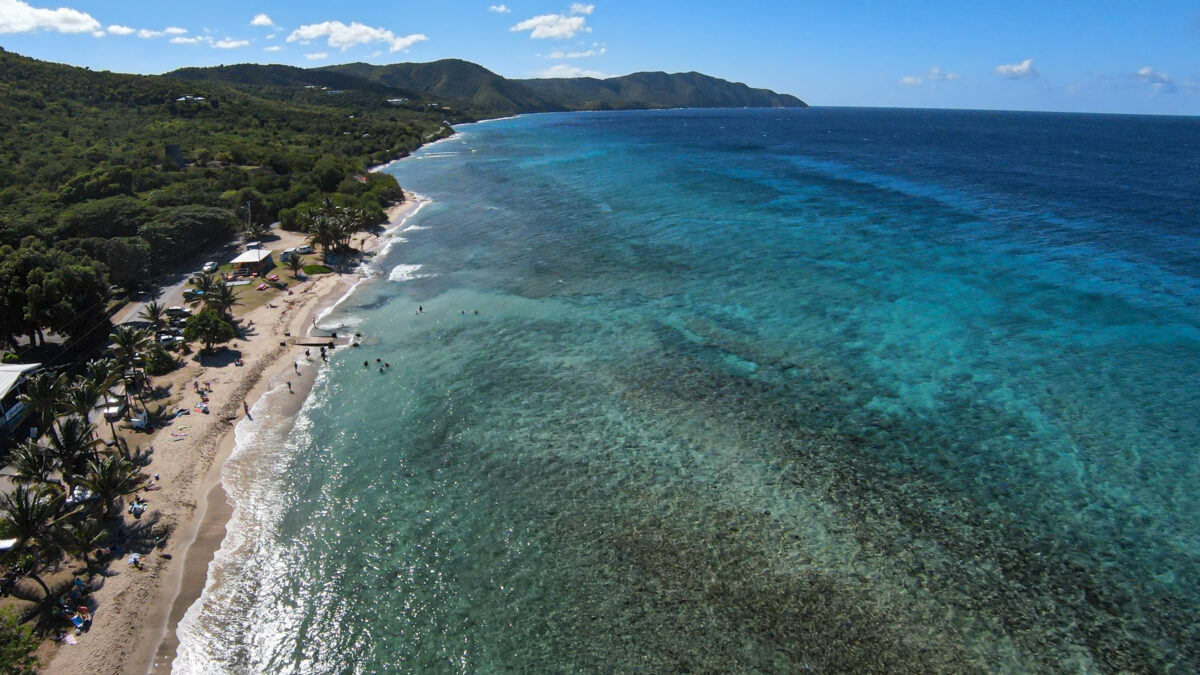
Cane Bay Beach, St. Croix
This narrow beach on St. Croix’s north shore is popular for a few reasons: it has gorgeous white sand, it’s great for divers and visitors can book horseback rides right on the beach. Cane Bay Beach has attracted divers to its shores due to its excellent location and diving conditions. The beach has a dive center, Cane Bay Dive Shop, and once you get offshore, there’s a deep drop-off that’s perfect for divers who want to explore deeper waters. If you want to explore the beach on horseback, book a session with Equus Ride, which welcomes riders of all levels, ages two and up. If you’re craving a burger or a cold beer, head to The Landing Beach Bar, located right on the beach.
Trunk Bay, St. John
If you can only make it to one beach in St. John, make sure it’s Trunk Bay. With perfect white sand and gin-clear water, it’s easy to see why this is seen as one of the best beaches in the Caribbean. Situated on St. John’s north shore, the area is a hot spot for snorkeling and has an underwater snorkel trail. The beach is located inside the Virgin Islands National Park, so there’s a $5 entry fee until 5 p.m., and there’s also a place to rent chairs and umbrellas. If you can pull yourself away from the screen-saver-worthy beach views, head to the adjacent beach bar for a burger, or enjoy their 9 a.m. - 11 a.m. happy hour with a cocktail.
Cinnamon Beach, St. John
Also located within the Virgin Islands National Park, Cinnamon Beach is the longest beach on St. John, spanning half a mile of soft, white sand. Though it’s a great swimming hole, the strong winds here make it ideal for windsurfing. The beach facilities include restrooms, a water sports rental hut and a small campsite nearby should you decide to stay in the park overnight. If you want to explore beyond the beach, there are a few scenic walking trails in the park. Spend an afternoon meandering through the park past mango and guava berry trees, or take the trail that leads to the remains of a 17th-century sugar plantation.
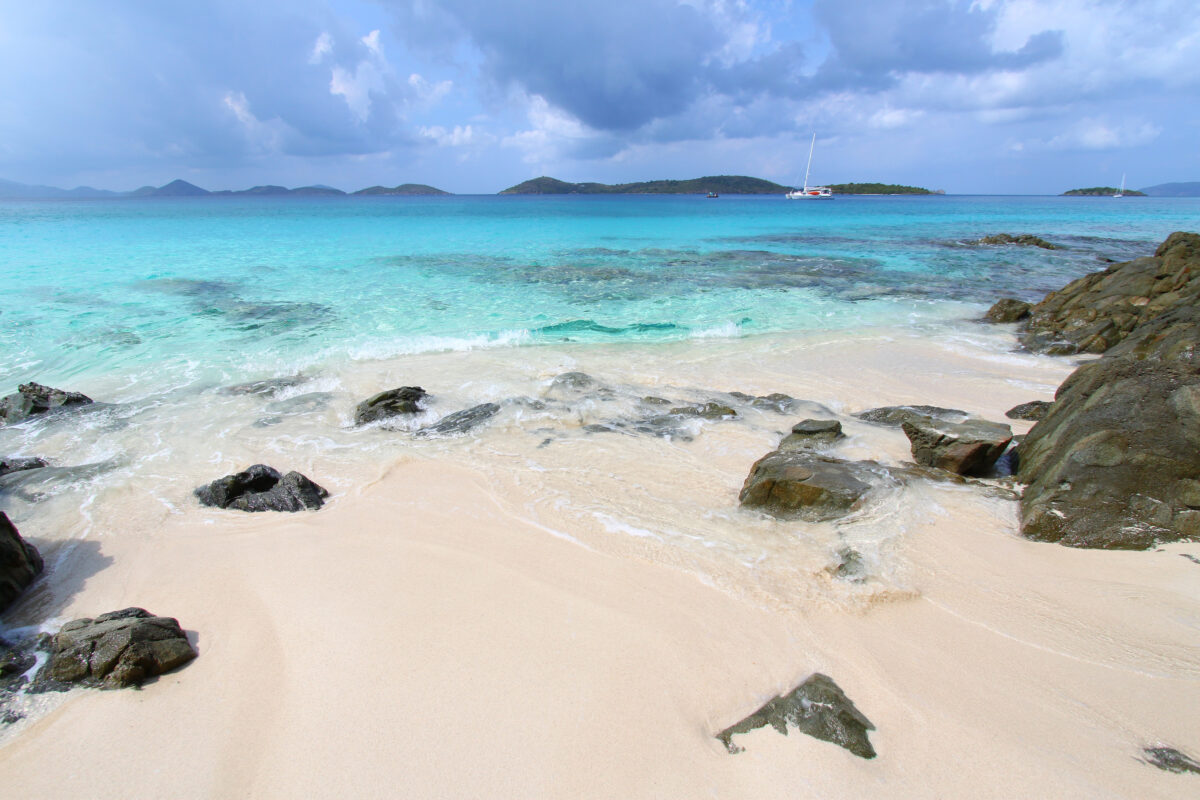
Honeymoon Beach, St. John
Shaded by coconut trees, Honeymoon Beach is another beach within the Virgin Islands National Park. Only accessible by boat or via a well-marked trail through the national park, its seclusion is one of its defining features. The picture-perfect white-sand beach has picnic tables and hammocks, and on a clear day, offers views of St. Thomas and the smaller nearby cays. The water at Honeymoon Beach is some of the best on the island, and the shallow water and swimming pool-like temps make it easy to stay the day. If you’re limited on time, consider booking a boat charter with a company like Palm Tree Charters, which includes a stop here for snorkeling and sunbathing.

